Putting your money with one of the largest banks generally means you’ll have more access to in-person services at branches, a large ATM network and a wide array of products and services, which can be convenient if you’re looking to do all your banking in one place.
To find the largest banks in the U.S., we looked at domestic asset sizes of institutions that serve both consumers and small businesses. The list includes retail banks for personal banking, rather than investment banks. A bank’s assets include, among other things, the amount of its loans, mortgages and credit card accounts. Some of these banks have thousands of branches, while others are mostly — or exclusively — online. All of these banks are FDIC insured.
Based on asset size, here are the top 20 largest banks in the U.S. according to the Federal Reserve[1].
» Want the best banks instead? Check out NerdWallet’s picks for the best national banks
The largest banks in the U.S.

NerdWallet rating
NerdWallet’s ratings are determined by our editorial team. The scoring formulas take into account multiple data points for each financial product and service.
1. Chase: $2.62 trillion
Chase, the largest bank for consumers and small businesses, is part of JPMorgan Chase & Co. It has one of the largest branch networks out of all the biggest banks, with locations in the most states.
-
ATMs: 16,000.
-
Branches: More than 4,700 in 48 states and Washington, D.C., with high concentrations in California, the East Coast and Texas; no branches in Alaska or Hawaii.
-
Learn more: Chase review.
» Want to find a Chase account with a sign-up bonus? Check out the current Chase bank promotions
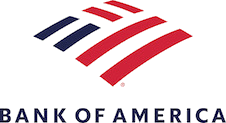
NerdWallet rating
NerdWallet’s ratings are determined by our editorial team. The scoring formulas take into account multiple data points for each financial product and service.
2. Bank of America: $2.39 trillion
Bank of America is the second-largest bank, located in the second-most number of states. Of the top three banks on this list, it offers the fewest branches but the most ATMs.
-
ATMs: About 16,000.
-
Branches: About 4,100 in 37 states and Washington, D.C., mostly concentrated in California, the East Coast and Texas.
-
Learn more: Bank of America review.
» How do the two largest banks stack up against each other? Find out in our Bank of America vs. Chase comparison
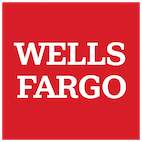
NerdWallet rating
NerdWallet’s ratings are determined by our editorial team. The scoring formulas take into account multiple data points for each financial product and service.
3. Wells Fargo Bank: $1.76 trillion
Wells Fargo is the bank with the most branches. But of the top three largest banks, Wells Fargo offers the fewest number of ATMs.
-
ATMs: More than 12,000.
-
Branches: About 4,900 in 36 states and Washington, D.C., with high concentrations in California, Florida and Texas.
-
Learn more: Wells Fargo review.
Have a high balance in your bank account?
See the advantages you can get with a premium bank account.
Learn more

NerdWallet rating
NerdWallet’s ratings are determined by our editorial team. The scoring formulas take into account multiple data points for each financial product and service.
4. Citibank: $1.01 trillion
Citibank has one of the fewest numbers of branches of banks on this list, but it does have a massive domestic network of ATMs.
-
ATMs: More than 65,000, including those in Allpoint and MoneyPass networks.
-
Branches: More than 650 across 11 states and Washington, D.C., with high concentrations in California and New York.
-
Learn more: Citibank review.

NerdWallet rating
NerdWallet’s ratings are determined by our editorial team. The scoring formulas take into account multiple data points for each financial product and service.
5. U.S. Bank: $552B
U.S. Bank offers thousands of ATMs and about half as many branches as the top three banks on this list.
-
ATMs: More than 37,000, including those in the MoneyPass network.
-
Branches: About 2,300 in 28 states, with high concentrations in California, Illinois and Ohio.
-
Learn more: U.S. Bank review.
» How do U.S. Bank and Wells Fargo compare? See our Wells Fargo vs. U.S. Bank comparison

NerdWallet rating
NerdWallet’s ratings are determined by our editorial team. The scoring formulas take into account multiple data points for each financial product and service.
6. PNC Bank: $547B
In 2021, PNC Bank acquired BBVA USA. PNC Bank now has branches in over half of the country.
-
ATMs: About 19,000; the bank may reimburse up to two out-of-network ATM fees per statement period.
-
Branches: More than 2,800 in 28 states and Washington, D.C., with high concentrations in Florida, New Jersey, Ohio, Pennsylvania and Texas.
-
Learn more: PNC Bank review.

NerdWallet rating
NerdWallet’s ratings are determined by our editorial team. The scoring formulas take into account multiple data points for each financial product and service.
7. Truist Bank: $528B
Truist Bank is the result of the 2019 merger of BB&T and SunTrust Bank. It has the fifth-highest number of branches of any bank on this list, with locations on the East Coast, in the Midwest and in the South.
-
ATMs: About 3,000.
-
Branches: About 2,500 in 17 states and Washington, D.C., with high concentrations in Florida, North Carolina and Virginia.
-
Learn more: Truist Bank review.
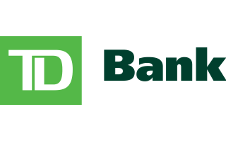
NerdWallet rating
NerdWallet’s ratings are determined by our editorial team. The scoring formulas take into account multiple data points for each financial product and service.
8. TD Bank: $424B
TD Bank’s physical reach is less widespread than that of other large banks. Its ATMs and branches are available only along the East Coast.
-
ATMs: 700.
-
Branches: About 1,100 in 15 states and Washington, D.C., mostly concentrated in Florida, Massachusetts, New York and New Jersey.
-
Learn more: TD Bank review.

NerdWallet rating
NerdWallet’s ratings are determined by our editorial team. The scoring formulas take into account multiple data points for each financial product and service.
9. Capital One: $381B
The Capital One network features the most ATMs of any banks on this list but relatively few branches. Some of the branches are Capital One cafes, where customers can attend free workshops and receive one-on-one financial coaching.
-
ATMs: More than 75,000.
-
Branches: More than 300 across eight states and Washington D.C., mostly concentrated in Louisiana and New York.
-
Learn more: Capital One review.
» Compare two online bank options. Check out our review of Ally Bank vs. Capital One 360

NerdWallet rating
NerdWallet’s ratings are determined by our editorial team. The scoring formulas take into account multiple data points for each financial product and service.
10. Fifth Third Bank: $210B
Fifth Third Bank is concentrated mainly in the South and Midwest, but its ATM network is the third largest of the banks on this list.
-
ATMs: More than 50,000, including ATMs in the Allpoint, Presto! and 7-Eleven network.
-
Branches: More than 1,200 in 11 states, with high concentrations in Florida, Illinois, Michigan and Ohio.
-
Learn more: Fifth Third Bank review.

NerdWallet rating
NerdWallet’s ratings are determined by our editorial team. The scoring formulas take into account multiple data points for each financial product and service.
11. Citizens Bank: $188B ($188,070,000,000)
Though Citizens Bank has relatively few ATMs, customers can get service at about 1,000 branches in the Midwest and Northeast.
-
ATMs: 3,000.
-
Branches: More than 900 in 14 states, with high concentrations in Massachusetts, New York and Pennsylvania.
-
Learn more: Citizens Bank review.

NerdWallet rating
NerdWallet’s ratings are determined by our editorial team. The scoring formulas take into account multiple data points for each financial product and service.
12. HSBC Bank USA: $188B ($187,956,000,000)
Though it currently sits at No. 12 on this list, HSBC will soon be closing its U.S. retail banking business. Citizens Bank and Cathay Bank agreed to purchase HSBC’s banking business on the East and West coasts, respectively. Savings, checking and loan customers’ accounts were transferred to either Citizens or Cathay in February 2022.
-
ATMs: 3,000 with Citizens Bank; more than 37,000 with Cathay Bank, including those in the MoneyPass network.
-
Branches:
-
More than 900 with Citizens Bank in 14 states and Washington, D.C., with high concentrations in Massachusetts, New York and Pennsylvania.
-
Around 60 with Cathay Bank in nine states, primarily concentrated in California.
-
-
Learn more: HSBC Direct Bank review.

NerdWallet rating
NerdWallet’s ratings are determined by our editorial team. The scoring formulas take into account multiple data points for each financial product and service.
13. KeyBank: $184B
KeyBank offers the fifth-largest ATM network of the banks on this list (tied with BMO Harris) as well as branches in over a dozen states.
-
ATMs: More than 40,000, including those in the Allpoint network.
-
Branches: About 1,000 in 16 states, with high concentrations in New York, Ohio and Washington.
-
Learn more: KeyBank review.

NerdWallet’s ratings are determined by our editorial team. The scoring formulas take into account multiple data points for each financial product and service.
NerdWallet rating
14. First Republic Bank: $181B
First Republic Bank offers the fewest branches of the brick-and-mortar banks on this list. It’s located mostly in California.
-
ATMs: None, but cash withdrawals are free at any ATM with some checking accounts.
-
Branches: 72 locations across 10 states; mostly in California.
» Want to learn how your money is protected in a bank? Read about FDIC insurance

NerdWallet rating
NerdWallet’s ratings are determined by our editorial team. The scoring formulas take into account multiple data points for each financial product and service.
15. Huntington National Bank: $173B ($173,414,000,000)
Huntington National Bank has a fair number of branches, but its presence is mainly in the Midwest.
-
ATMs: More than 1,600.
-
Branches: More than 1,000 locations in 12 states, with high concentrations in Michigan and Ohio.
-
Learn more: Huntington Bank review.
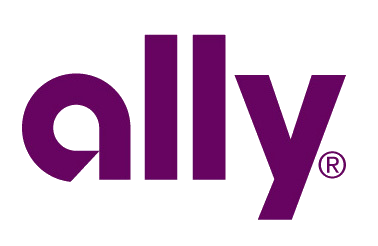
NerdWallet rating
NerdWallet’s ratings are determined by our editorial team. The scoring formulas take into account multiple data points for each financial product and service.
16. Ally Bank: $173B ($172,820,000,000)
Ally is available online only and is one of just two banks on this list without any branches. Customers can access their cash for free via the fourth-largest ATM network on this list.
-
ATMs: More than 43,000.
-
Branches: 0.
-
Learn more: Ally Bank review.
» How does a bank in the top 10 stack up against a bank in the bottom 10 of this list? Check out our comparison of PNC Bank vs. Ally Bank

NerdWallet rating
NerdWallet’s ratings are determined by our editorial team. The scoring formulas take into account multiple data points for each financial product and service.
17. BMO Harris Bank: $167B
BMO Harris offers services at just a few hundred branches but provides free access to thousands of ATMs via the fifth-largest network on this list (tied with KeyBank).
-
ATMs: More than 40,000 fee-free ATMs, including those in the Allpoint network.
-
Branches: More than 500 in eight states, with high concentrations in Illinois and Wisconsin.
-
Learn more: BMO Harris review.

NerdWallet rating
NerdWallet’s ratings are determined by our editorial team. The scoring formulas take into account multiple data points for each financial product and service.
18. Regions Bank: $162B
Regions Bank is mostly concentrated in a handful of Southern states. It offers over a thousand branches and a couple of thousand ATMs.
-
ATMs: About 2,000.
-
Branches: More than 1,300 locations in 16 states; with high concentrations in Alabama, Florida and Tennessee.
-
Learn more: Regions Bank review.

NerdWallet rating
NerdWallet’s ratings are determined by our editorial team. The scoring formulas take into account multiple data points for each financial product and service.
19. Union Bank: $128B
Union Bank is one of the smaller institutions on this list when it comes to the number of branches and ATMs, with a presence only on the West Coast.
-
ATMs: More than 450.
-
Branches: About 300 in California, Oregon and Washington.
-
Learn more: Union Bank review.
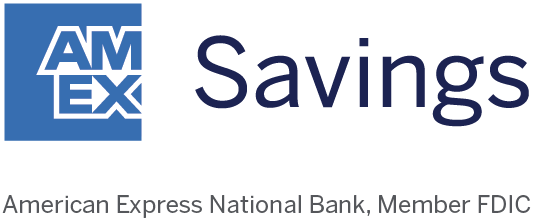
NerdWallet rating
NerdWallet’s ratings are determined by our editorial team. The scoring formulas take into account multiple data points for each financial product and service.
20. American Express National Bank: $126B
American Express National Bank is available online only. In early 2022, the bank launched its Rewards Checking Account, available to consumers who’ve had an American Express credit card for at least three months. And the bank’s savings rates are among the best you’ll find online or elsewhere.
-
ATMs: More than 37,000 as part of the MoneyPass network.
-
Branches: 0.
-
Learn more: American Express National Bank review.
» Want to earn a cash bonus for opening a new bank account? Check out our best bank promotions
Frequently asked questions
What is the largest bank in the U.S.?
Chase, part of JPMorgan Chase & Co., is the largest bank by asset size in the U.S., including deposits from checking and savings and other accounts, plus loans, mortgages and more. It has $2.62 trillion in assets, according to the latest information from the Federal Reserve.
What are the five largest banks in the U.S.?
The five largest banks in the U.S., according to domestic assets, are Chase, Bank of America, Wells Fargo Bank, Citibank and U.S. Bank.
What makes big banks different from smaller banks?
Generally, big national banks serve more of the country than regional or community banks do. A regional bank might be limited to serving a few neighboring states; a community bank might serve only one city within a state.
National banks tend to have more technological resources and a wider variety of products than smaller banks; on the other hand, smaller banks can offer more personalized service.
Some of the biggest banks in the U.S. (according to their assets) are also regional banks, serving a smaller area than big-name banks such as Chase and Bank of America. These banks may offer in-person services to a specific region as well as a robust menu of services and accounts online.
Is my money safer in a national bank vs. a regional bank (or a national credit union vs. a regional credit union)?
Your money is equally safe in any bank that’s insured by the Federal Deposit Insurance Corp. As long as your bank has this protection, you’re insured for up to $250,000 per person, per ownership category, per bank.
Similarly, your money is equally safe in any credit union that’s insured by the National Credit Union Administration. Credit unions that have this protection insure your money for up to $250,000 per person, per account, per credit union.
What is the largest bank in the U.S.?
Chase, part of JPMorgan Chase & Co., is the largest bank by asset size in the U.S., including deposits from checking and savings and other accounts, plus loans, mortgages and more. It has $2.62 trillion in assets, according to the latest information from the Federal Reserve.
What are the five largest banks in the U.S.?
The five
largest banks in the U.S.
, according to domestic assets, are Chase, Bank of America, Wells Fargo Bank, Citibank and U.S. Bank.
What makes big banks different from smaller banks?
Generally, big national banks serve more of the country than regional or community banks do. A regional bank might be limited to serving a few neighboring states; a community bank might serve only one city within a state.
National banks tend to have more technological resources and a wider variety of products than smaller banks; on the other hand, smaller banks can offer more personalized service.
Some of the biggest banks in the U.S. (according to their assets) are also regional banks, serving a smaller area than big-name banks such as Chase and Bank of America. These banks may offer in-person services to a specific region as well as a robust menu of services and accounts online.
Is my money safer in a national bank vs. a regional bank (or a national credit union vs. a regional credit union)?
Your money is equally safe in any bank that’s insured by the Federal Deposit Insurance Corp. As long as your bank has this protection, you’re insured for up to $250,000 per person, per ownership category, per bank.
Similarly, your money is equally safe in any credit union that’s insured by the National Credit Union Administration. Credit unions that have this protection insure your money for up to $250,000 per person, per account, per credit union.
METHODOLOGY
Banks are ranked according to the size of their domestic assets, including loans, mortgages and credit card accounts. This data is accurate as of Dec. 31, 2021, according to the latest information available[1].
ARTICLE SOURCES
Works cited
-
Federal Reserve, “Large Commercial Banks release,” accessed March 22, 2022.
A previous version of this article gave incorrect domestic asset figures for banks No. 5 through No. 20 on this list. This article has been corrected.